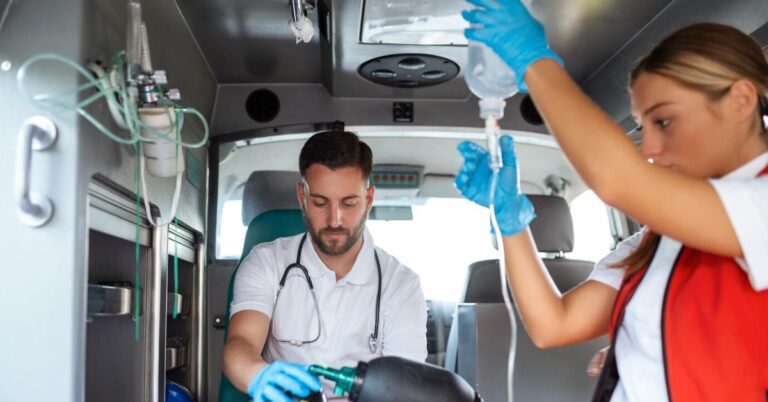When Every Second Counts
In critical medical situations, the value of time cannot be overstated. The difference between life and death often hinges on how quickly a patient can receive specialized medical care. While ground ambulances are effective in urban settings, they are limited by road traffic, long travel distances, or geographical barriers. That’s where an air ambulance service becomes indispensable—offering rapid, reliable, and expertly managed transport when urgency is paramount.
The Lifeline Above Ground
An air ambulance service is a medical transportation solution that employs aircraft such as helicopters and fixed-wing planes to transport patients who are seriously ill or injured. These aircraft are outfitted with advanced medical equipment and staffed by trained healthcare professionals, providing in-flight care that rivals intensive care units on the ground.
This service plays a vital role in bridging the time gap between the onset of a medical emergency and access to advanced treatment facilities. Whether it’s transferring a patient from a remote area to a metropolitan hospital or conducting international patient repatriations, air ambulances provide a level of care and speed unmatched by conventional methods.
A Flying Intensive Care Unit
What makes an air ambulance service truly life-saving is the onboard medical setup. These aircraft are not simply for transportation—they are highly sophisticated mobile ICUs. They carry equipment such as ventilators, cardiac monitors, infusion pumps, oxygen systems, defibrillators, and other critical devices. This setup allows for continuous patient monitoring and intervention during transit, ensuring medical stability even at high altitudes.
Medical teams on board are trained for the specific challenges of aeromedical care. Unlike in a hospital, treating patients mid-flight comes with unique variables—cabin pressure, turbulence, limited space, and the need for precise coordination. The teams typically include flight nurses, paramedics, or doctors experienced in emergency medicine, trauma care, and intensive care transport.
Beyond Emergencies: Planned Medical Transfers
Although often associated with emergencies, air ambulance services are also crucial for non-urgent medical transport. Patients who require ongoing treatment at specialized facilities in other cities or countries often use these services for planned transfers. For example, someone recovering from major surgery may need to return home or continue treatment in a different region.
Air ambulance providers handle every detail of the process. From coordinating with hospitals and ground ambulances to managing medical clearances and flight logistics, the goal is to offer a seamless, stress-free experience for the patient and their family. The service includes bedside-to-bedside care, ensuring continuous medical supervision throughout the journey.
Navigating Challenging Terrains and Situations
Many lives are saved because air ambulances can access locations unreachable by road. In rural communities, mountainous regions, or islands, traditional ground ambulances may take hours to reach a patient—or may not be able to reach them at all. With air transport, those limitations are overcome.
In disaster zones or after large-scale accidents, air ambulances often serve as the first line of rapid response, evacuating critically injured individuals before the situation worsens. Their ability to land in open fields, highways, or specially designated helipads makes them one of the most flexible and dependable modes of emergency transport.
Commitment to Safety and Precision
Safety is central to the effectiveness of any air ambulance service. Aircraft used for medical transport are subject to stringent safety checks and maintenance routines. The aviation crew is trained not just in flying, but in operating under the pressures and unique conditions that medical missions present.
Weather assessments, flight planning, emergency protocols, and crew readiness are all part of a finely tuned operation. Flights are often supported by 24/7 mission control centers that monitor progress and provide logistical and medical support in real-time. These operations reflect a level of professionalism that prioritizes both medical and aviation excellence.
Swift Mobilization and Global Reach
One of the most crucial advantages of a reputable air ambulance service is its readiness. Top providers maintain aircraft on standby and medical crews ready to deploy at a moment’s notice. In time-sensitive emergencies, this ability to mobilize within a few hours can mean everything.
Modern air ambulance operations are also global. Patients can be transported across countries and continents, with all necessary clearances and arrangements handled as part of the service. Whether it’s a tourist injured abroad or a critically ill patient seeking advanced care overseas, these services bridge the distance with efficiency and care.
Conclusion
An air ambulance service represents more than just rapid transportation—it is a critical extension of emergency and specialty healthcare. Its ability to provide immediate, intensive care while swiftly moving patients from point A to point B is unmatched in the medical world. Whether it’s responding to a life-threatening injury in a remote area or arranging a planned transfer for advanced treatment, these services offer a lifeline when it matters most.
Fast, reliable, and life-saving—an air ambulance service isn’t just a benefit of modern medicine. It is a testament to what’s possible when expert care takes flight.

